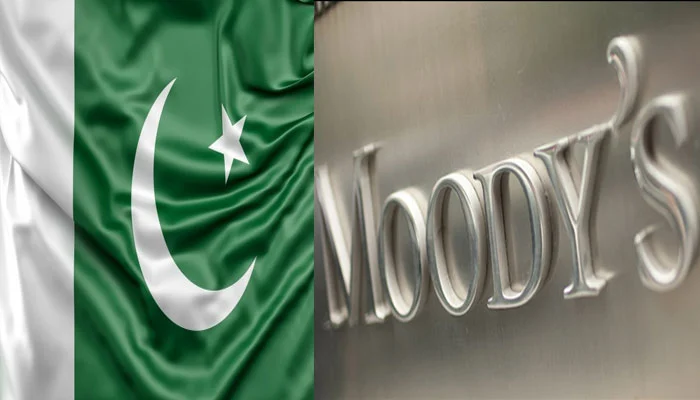Global rating agency Moody’s on Friday highlighted significant concerns regarding Pakistan’s debt sustainability. The agency noted that the government allocates more than half of its revenue to interest payments, reflecting very weak debt affordability.
In its assessment of the newly proposed finance bill for fiscal year (FY) 2025, Moody’s stated, “The budget estimated debt servicing payments to have increased by about 18% for fiscal 2025 compared with a year ago.”
The agency elaborated, “The government spends more than half its revenue on interest payments, indicating very weak debt affordability which drives high debt sustainability risks.” Specifically, approximately 55% of FY 2025 revenue (Rs9.8 trillion) is earmarked for interest payments on the government’s debt.
Moody’s pointed out that the increase in expenditure demonstrates a lack of significant cost-containment measures and highlights Pakistan’s very high interest payments. The agency also noted that subsidies have increased by 27% to Rs1.4 trillion, primarily due to substantial rises in subsidies to the power sector, indicating limited progress in energy sector reforms.
Overall, Moody’s remarked that the budget reflects “quicker fiscal consolidation,” but emphasized that the ability to sustain reforms will be crucial for easing liquidity risks. The agency aligned with expert opinions, indicating that the finance bill will likely support Pakistan’s ongoing negotiations with the International Monetary Fund (IMF) for a new Extended Fund Facility (EFF) programme. This programme is essential for the government to unlock financing from the IMF and other bilateral and multilateral partners to meet its external financing needs.
However, Moody’s cautioned that the government’s ability to “sustain reform implementation” is key to meeting budget targets and securing external financing, which is necessary to ease liquidity risks. It warned that social tensions, driven by the high cost of living and potential increases in taxes and energy tariffs, could hinder reform implementation.
Moreover, the agency noted risks related to the coalition government’s potentially insufficient electoral mandate to consistently implement difficult reforms.
In the budget, the government announced a consolidated budget deficit of 5.9% of GDP for FY 2025, down from the previous year’s estimated 7.4%, with the primary balance set at a surplus of 2% of GDP for the upcoming year. The government projects real GDP growth at 3.6% and headline inflation at 12%. It also aims to increase federal government revenue to an ambitious Rs17.8 trillion — 46% higher than the previous year — through new taxes and stronger nominal growth.
Moody’s commented that the government’s approach shows an intention to achieve quicker fiscal consolidation mainly through revenue increases, with minimal spending-containment measures.
In related news, the World Bank’s ‘Global Economic Prospects’ report projected that Pakistan’s growth would rise to 2.3% in FY 2025. It noted improvements in industrial activity and confidence, driven by easing import restrictions and moderating inflation, although these remain constrained by tight macroeconomic policies.
The report also mentioned that inflation has moderated over the past year due to high base effects and the stabilisation of the exchange rate but remains high. On a positive note, it indicated that foreign exchange reserves have increased in several countries, including Pakistan, reflecting easing currency pressures and receipt of official flows.













